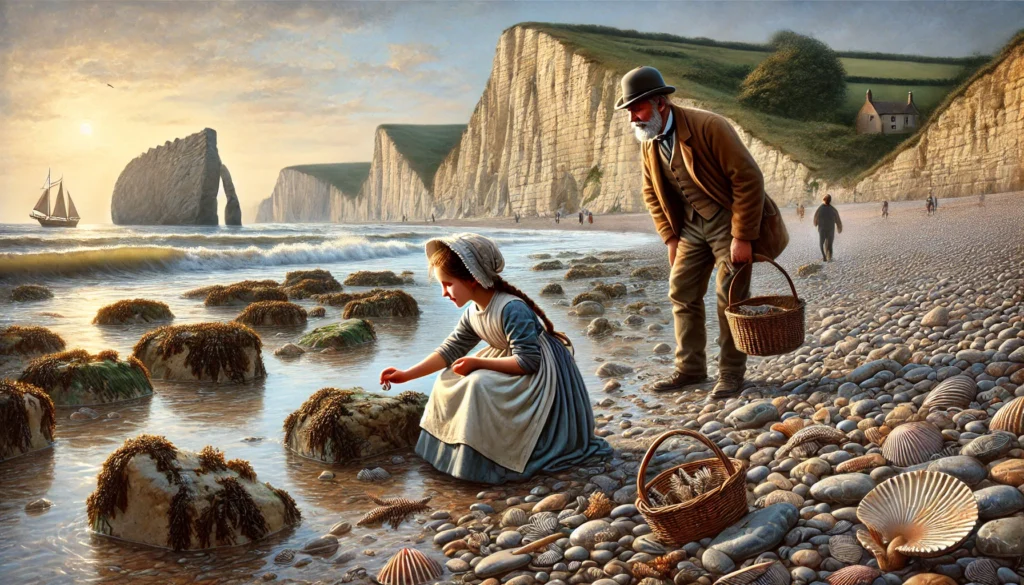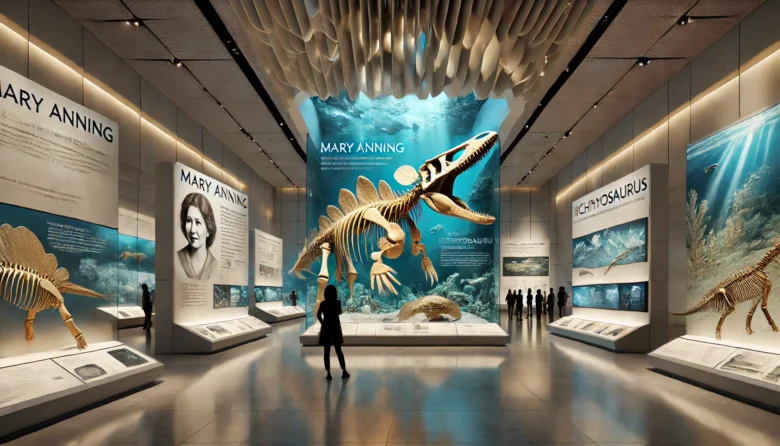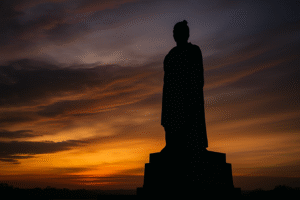Did you know that Mary Anning, a self-taught fossil hunter, discovered the first complete Ichthyosaurus skeleton when she was just 12 years old? Her remarkable contributions laid the groundwork for modern palaeontology, yet she lived in relative obscurity during her lifetime.
Introduction
Mary Anning (1799–1847) may not be a household name, but her story is as fascinating as the fossils she unearthed. Born in Lyme Regis, a coastal town in England, Anning’s keen eye and relentless curiosity transformed her from a poor carpenter’s daughter into one of the most influential figures in the history of science. This blog delves into her life, achievements, and the lasting impact she made on palaeontology, even in the face of societal and gender-based obstacles.
The Life of Mary Anning
Born on May 21, 1799, Mary Anning grew up in a modest household in Lyme Regis, part of the Jurassic Coast, now a UNESCO World Heritage Site. Her father, a carpenter, supplemented the family’s income by collecting and selling fossils—a practice Mary inherited after his death in 1810. Despite her lack of formal education, Anning’s intelligence and perseverance allowed her to excel in the male-dominated field of fossil hunting.

Early Discoveries
One of Anning’s first major discoveries came in 1811 when she and her brother, Joseph, found the skeleton of an Ichthyosaurus (“fish lizard”) in the cliffs of Lyme Regis. This discovery not only amazed the scientific community but also helped establish the then-emerging field of palaeontology. Over the years, she went on to uncover other groundbreaking fossils, including the first complete Plesiosaurus and specimens of Pterodactylus (early flying reptiles).
Breaking Barriers
Mary Anning’s work came at a time when women were largely excluded from scientific circles. Despite this, she gained the respect of prominent scientists such as Henry De la Beche, Richard Owen, and William Buckland. However, due to societal norms, Anning rarely received the credit she deserved. Scientific papers often cited her discoveries without acknowledging her contributions, leaving her name out of the limelight.
Anning’s Fossils and Evolutionary Science
Anning’s discoveries played a critical role in shaping the early theories of extinction and evolution, paving the way for Charles Darwin’s groundbreaking work. For instance, the fossils she uncovered challenged the prevailing religious belief that all life forms had been created simultaneously and had remained unchanged since creation. Her findings offered tangible evidence of extinct species, providing crucial data for the scientific community to explore Earth’s history.
The Legacy of Mary Anning
Despite the challenges she faced, Anning’s contributions to palaeontology have stood the test of time. Today, she is celebrated as a pioneer who revolutionized our understanding of prehistoric life. Institutions like the Natural History Museum in London showcase her discoveries, and she has become a source of inspiration for aspiring scientists across the globe.
Honoring Her Contributions
In 2010, 163 years after her passing, the Royal Society recognized Mary Anning as one of the ten most influential women in science. Additionally, the Lyme Regis Museum—situated near her birthplace—offers a detailed glimpse into her life and work.
Conclusion
Mary Anning’s story is one of determination, brilliance, and resilience. Her life reminds us that passion and perseverance can break down barriers, even in the face of adversity. Next time you see a fossil or hear about the prehistoric era, take a moment to remember the woman who dedicated her life to uncovering Earth’s secrets.
Call to Action: Dive deeper into Mary Anning’s story and support initiatives that recognize unsung heroes in science. Consider visiting the Lyme Regis Museum or reading more about her groundbreaking discoveries. Let her story inspire you to explore your passions, no matter the odds.
Author’s Note:
Mary Anning’s story is a profound reminder that anyone, regardless of their background, can leave a lasting impact on science and society. I hope her story ignites curiosity and determination in readers of all ages.
G.C., Ecosociosphere contributor.




